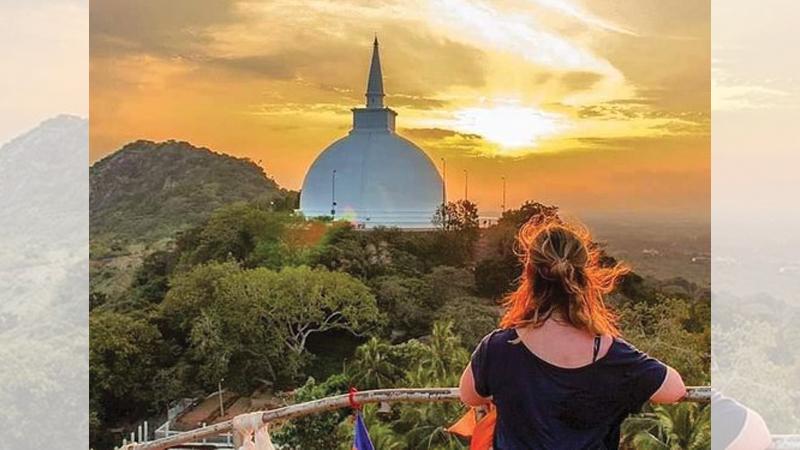
Poson Full-Moon Poya Day is celebrated to mark the arrival of Buddhism in Sri Lanka in the third century BC, a festival of great historical and religious significance. Poson, held on the full moon day of June, commemorates the occasion over 2,000 years ago when Arahat Mahinda, son of Emperor Asoka of India, gave King Devanampiyatissa a philosophical inkling of Buddha Dhamma and introduced the Buddha’s teaching to the country. The main centre of celebration is Mihintale, Anuradhapura, the ancient monastic complex where Mahinda Thera delivered the first sermon to the ruling king. Countrywide religious observances, illuminations and pageants are part of the celebrations.
This hallowed day of Poson is second only to Vesak in terms of importance. Although Poson is celebrated throughout the island, the major ceremonies are held in Anuradhapura and Mihintale. Long lines of devotees dressed in white climb the many steps to the top of the Mihintale hill first to the temple, and then to the dagobas that adorn the nearby hillocks. Many devotees climb to the top of the rock, to the spot where Arahat Mahinda delivered his initial discourses.
Poson Poya is celebrated annually with great fervour in Mihinthale in particular where Mahinda Thera first put his foot to preach the word of the Buddha. This is why Mihinthale is called the cradle of Buddhism in Sri Lanka. With the establishment of the Bhikkhu Sasanaya, all other characteristics of a civilised society began to emerge, including the art of writing, art, architecture, hydraulic civilization, religious rituals in song and dance forms and literature, all with royal patronage.
Many religious activities are organised during this poson season in Sri Lanka, such as Sil campaigns, Bodhi Poojas, Dansalas, Poson devotional songs, Posonpandols (thoran) and lanterns.On PosonPoya Day, many temples are filled with Atasil devotees and pilgrims all over the country.
